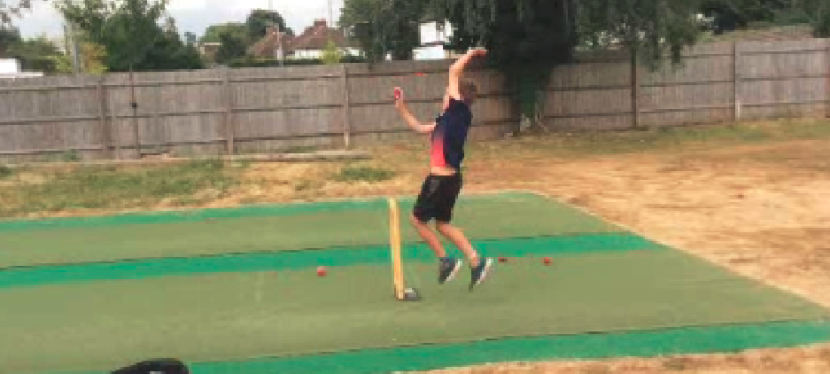There is a lot going on with a bowling action! So how do we coach it without bombarding our players with information?!
With such a bewildering list of potential flaws, it is easy to “lurch” from statement to statement – “get your arm higher” one ball, “keep your chin up” the next. But in order to improve consistently, player’s need consistent feedback.
This “4-Ways” Bowling Session is one way of keeping a consistent message. It also prompts your players to think on their feet – moving from “what” went wrong” to “why”.
HOW IT WORKS
Divide your group up into 4 teams. Each team rotates around the 4 activities below (about 10-15mins on each).
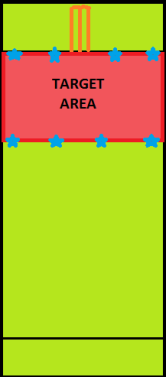
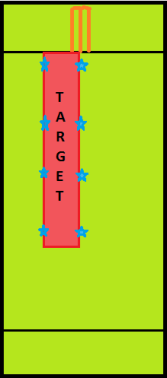
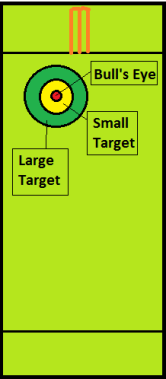
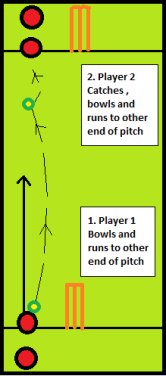
1. BOWLING LENGTH
- Target Area: from “good length” (about 5-6m from the wickets), to the batting crease (“yorker” length)
- Coaching Theme: height and balance. Making sure your bowlers a) get up tall, and b) stay tall through their action
- Get Them Thinking: what MAKES the ball come out “too early” or “too late”. These statements mean nothing on their own….releasing the ball isn’t a conscious thing!
2. BOWLING LINE
- Target Area: between middle stump and “5th/6th stump (2 or 3 imaginary stumps outside)
- Coaching Theme: run-up and the correct angles. Making sure bowlers are concentrating their effort to the target
- Get Them Thinking: what makes the ball go straight, left or right? To many young bowlers have no idea how to diagnose these flaws
3. BOWLING TARGET
- Target Area: Bull’s Eye, Small & Large Targets (more points the closer to the Bull’s Eye)
- Coaching Theme: Focus on where to “pitch” (bounce) the ball. Do they have a firm eye on the EXACT target from start to finish?
- Get them Thinking: a) Am I looking at the right target (spot on the pitch)? b) Am I always looking at that spot?
4. “BOWL-AND-FOLLOW” GAME
- Target Area: get players bowling to keeper’s hands
- Coaching Theme: momentum! Moving forwards in a smooth and constant way, from start to finish!
- Get Them Thinking: is my bowling action smooth? Or am I jerky (stop-start)? Any change in effort, pace or intensity should be gradual.
____________________________________________________________________________________________
SOME MORE ANALYSIS
1. BOWLING LENGTH
 TOO EARLY: the ball must have slid out of the hand as it is coming over. This could be because of
TOO EARLY: the ball must have slid out of the hand as it is coming over. This could be because of
– Leaning to the side – which means the fingers are no longer behind the ball
– Wrist position – everything could be right, but a “floppy” wrist could undo it all!
– Poor gather – look to see if your bowler is preparing their arms correctly. If the arms are out to the side, their action will be more of a “sling”- TOO LATE: nearly always because a bowler is falling down
– Legs collapsing – look for bent knee. This will make it impossible for a bowler to stay tall
– Back bending – look at the run-up, for signs of “stooping”
– Arms lifting to sky – what goes up, must come down! Make sure that a player’s arms are up AND IN FRONT OF THEM. Not vertically upwards, and dragging their body to the floor
– Legs stopping – keep the legs driving “throught the crease”. Look to see if a bowler’s knees are high, so they have support for their body each step.
2. BOWLING LINE
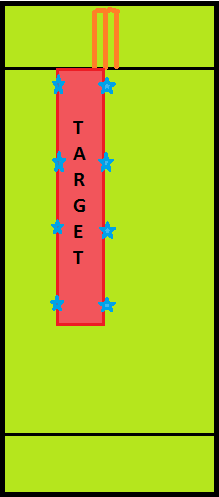 LEG-SIDE (ASSUMING RH BATTER & BOWLER): usually this is caused by a bowler’s arm dropping down
LEG-SIDE (ASSUMING RH BATTER & BOWLER): usually this is caused by a bowler’s arm dropping down
– Use shoulders more – you need your shoulder working to get your bowling arm higher. Are your bowlers’ shoulders “engaged”?
– Poor aiming – if your aiming arm is lazy, your body can “open up”. This will mean you can’t drive your arm properly to the target
– Not “completing” the action – if the bowling arm is slowing arm, is begins to droop. Result = balls fall to the leg-side. Make sure your bowling arm carries on until it is pointing behind you.
– Delivery stride – if the last step is across your body, is blocks you from bowling the ball to the target- OFF-SIDE: caused by a twisting body, that pulls the ball to this direction
– Delivery stride – get your front foot and leg pointing to the target. The body needs this leg for support. Without it, you will fall away to the side
– Twisting shoulders – your shoulders need to move in a “vertical plane” (eg/ right arm up and over, left arm down and under). When they move in a “horizontal plane” (eg/ twisting round”), the bowling action becomes more of a discus throw.
3. BOWLING TARGET
- RUN-UP – is my run-up balanced, allowing my head (the heaviest part of the body) to be stable
– Stooping – sometimes a bowling action is ruined from the first step of the run-up!
– Poor running style – look out for knees and heels. Are they staying in line? - JUMP – am I stable “in-flight”? or am “falling” into my bowling action?
– Arms and legs “inside the vehicle”! – - FOLLOW-THROUGH – am I able to see where the ball hits the pitch? Could i pinpoint exactly where it landed? If I can’t, then why (have I fallen or leant to the side)?
4. “BOWL-AND-FOLLOW” GAME
- DECELERATING – a bowler is more likely to bowl a ball that drops short or “sits up” to be hit
- SUDDEN BURST OF EFFORT – straining to hard for speed.
- LEGS – each step needs to be a similar length and at a similar “rate”. Check to see if your bowlers are moving smoothly from one step to another, not “putting the brakes on” (pause between steps, often caused by lunging forwards), or “shuffling” (series of short steps, that lose the momentum you built up).
